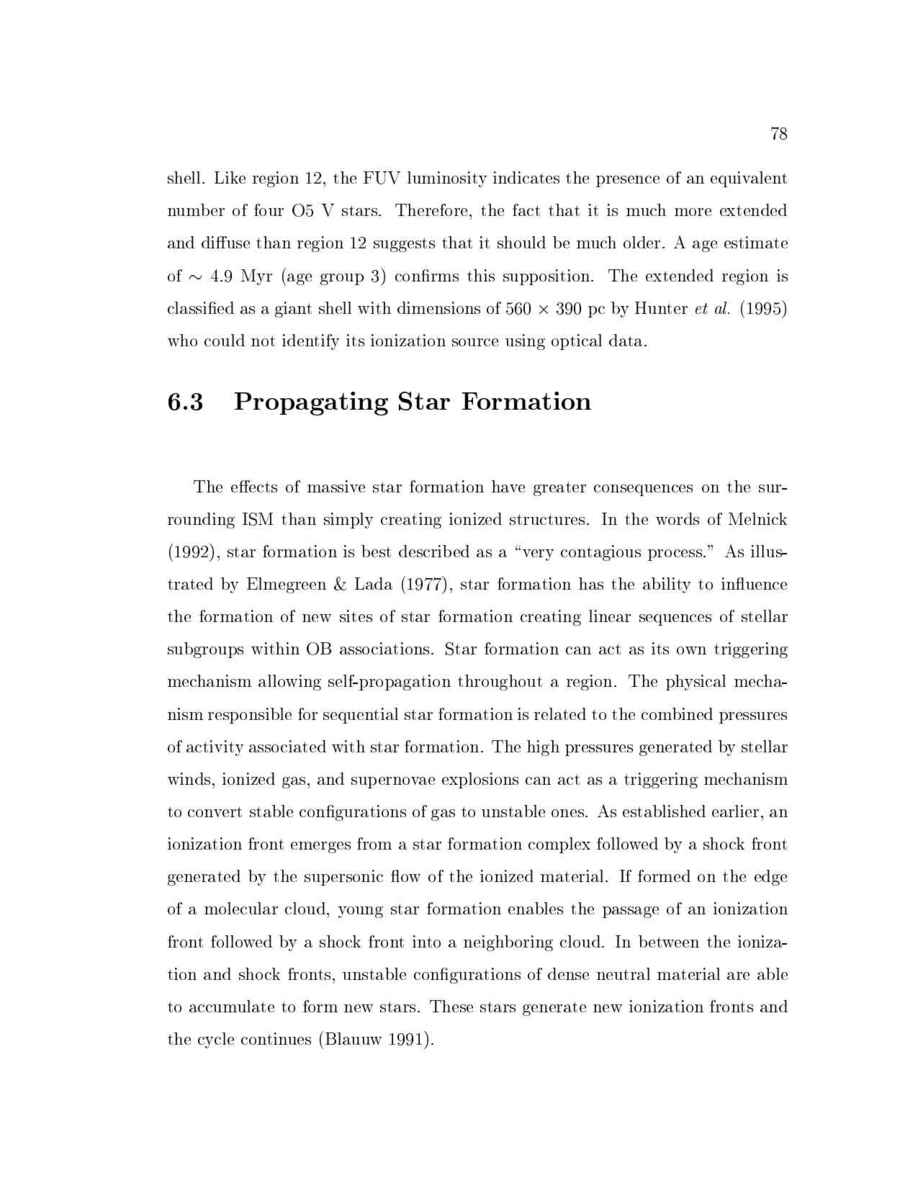Astronomical Applications Department, U.S. Naval Observatory thesis Page 92

78
shell. Like region 12, the FUV luminosity indicates the presence of an equivalent
number of four O5 V stars. Therefore, the fact that it is much more extended
and di use than region 12 suggests that it should be much older. A age estimate
of
4
:
9 Myr age group 3 con rms this supposition. The extended region is
classi ed as a giant shell with dimensions of 560
390 pc by Hunter
et
al.
1995
who could not identify its ionization source using optical data.
6.3 Propagating Star Formation
The e ects of massive star formation have greater consequences on the sur-
rounding ISM than simply creating ionized structures. In the words of Melnick
1992, star formation is best described as a very contagious process." As illus-
trated by Elmegreen & Lada 1977, star formation has the ability to in uence
the formation of new sites of star formation creating linear sequences of stellar
subgroups within OB associations. Star formation can act as its own triggering
mechanism allowing self-propagation throughout a region. The physical mecha-
nism responsible for sequential star formation is related to the combined pressures
of activity associated with star formation. The high pressures generated by stellar
winds, ionized gas, and supernovae explosions can act as a triggering mechanism
to convert stable con gurations of gas to unstable ones. As established earlier, an
ionization front emerges from a star formation complex followed by a shock front
generated by the supersonic ow of the ionized material. If formed on the edge
of a molecular cloud, young star formation enables the passage of an ionization
front followed by a shock front into a neighboring cloud. In between the ioniza-
tion and shock fronts, unstable con gurations of dense neutral material are able
to accumulate to form new stars. These stars generate new ionization fronts and
the cycle continues Blauuw 1991.
